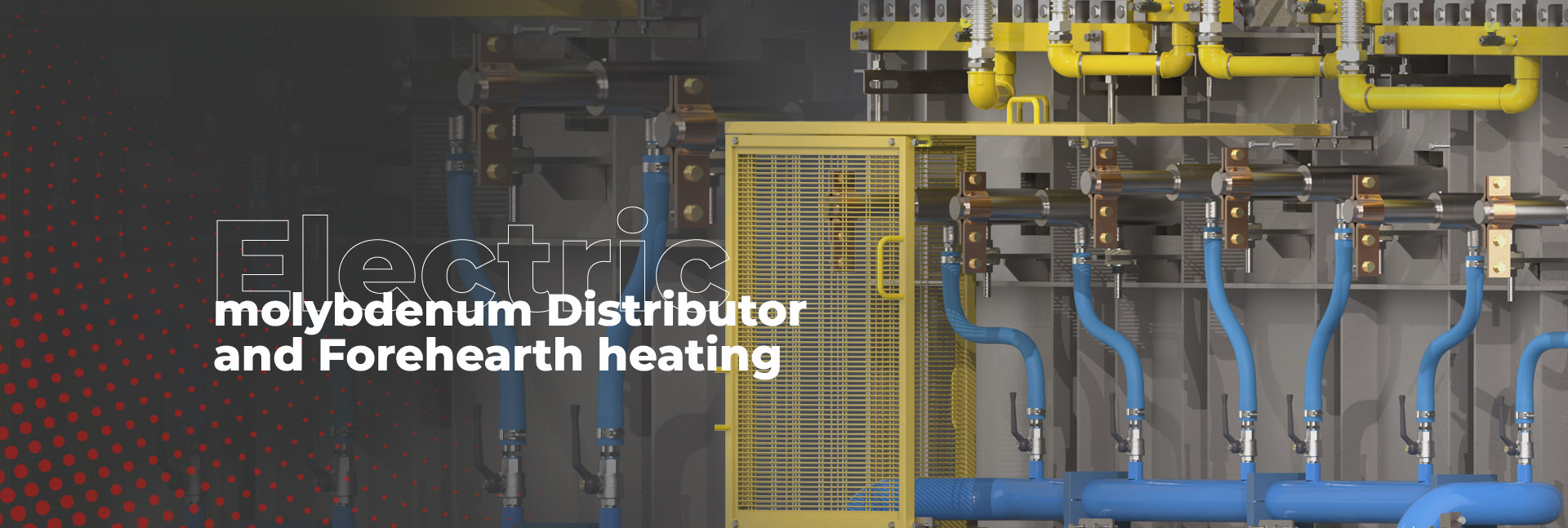
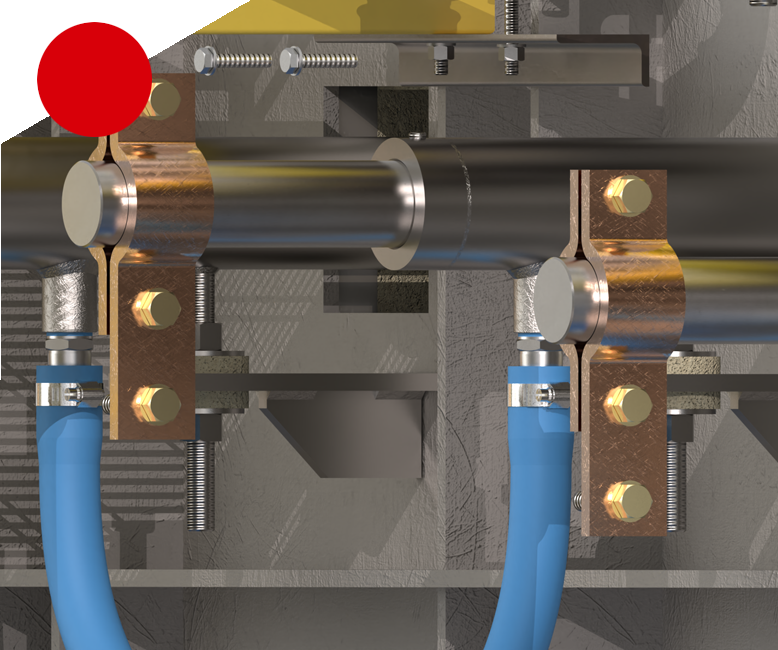
Electric molybdenum Distributor and Forehearth heating
Technology description
- For the heating of the distributor and forehearth, Glass Service has developed the technology of glass heating using dry electrodes installed on the side-walls of every section.
- The electrodes are directly immersed in the molten glass and heat it through a direct passage of electric current.
- The electrodes are cooled by ventilated air produced by a centrifugal fan without the use of water, simplifying field installation, reducing piping, and eliminating the management of the heated water.
- For start up, Glass Service has developed a special preheating technique that facilitates the hot insertion of the electrodes.
- The power emitted by each electrode is limited to ensure good thermal homogeneity of the glass and a long lifespan of the molybdenum.
- The power of each section is relatively low; typically, powers in the range of 20-50 kW are installed to deliver much less than the installed value, i.e., 7-16 kW per zone.
- For operator safety reasons, the voltage of the electrodes is also kept very low, typically around 50-100 VAC maximum.
Problem
Electrodes water cooling manage
Solution
- Dry air-cooled electrode
High cost of air cooling by compress air
- Electrode holder design suitable for low pressure cooling air produced by centrifugal fan
- High cooling efficiency electrodes holder
Glass thermal homogeneity
- Installing of large quantity of electrodes with low electric power each one
Oxygen bubbler formation
- Installing of large quantity of electrodes with low electric power each one
- Vdc Current/Voltage compensator available
Safety of maintenance and production operator
- Use of low voltage and low power in each section
Elimination of residual voltage in the gob
- Installation of ground electrode close to the spout
Short circuit protection
- Fuses board technology
Fault of electrical insulation
- Ground electrode current control and alarm trig
Electrode Technology Dry
Heating with immersed electrodes reduces energy emitted through the combustion of Natural Gas by up to 60% compared to air/gas heating technology. Consequently, it also reduces 60% CO2 emissions into the atmosphere.
The technology can be applied to all types of glass, including flint, amber, and green. For extra flint glass or crystal glass lead, the molybdenum electrodes can be replaced with tin oxide ones, to avoid a slight grey shades, caused by chemical reaction between glass and molybdenum.
The technology used for electric power panels involves the use of thyristors coupled with low-power dry-type transformers. This technology is suitable for low electrical powers to be supplied and allows a perfect control.
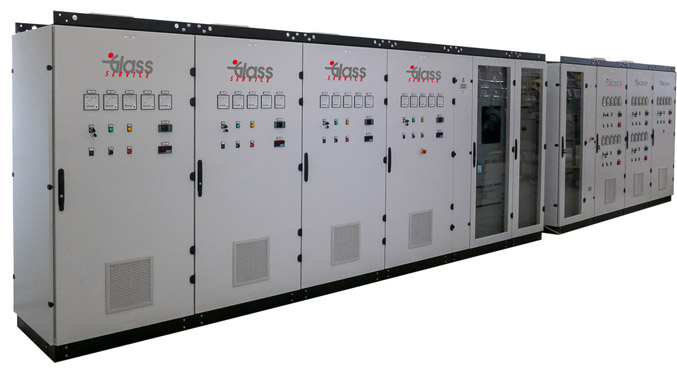
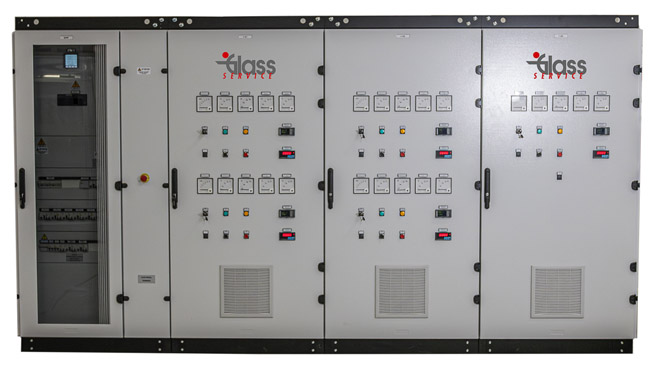
Electric booster molybdenum electrodes block diagram
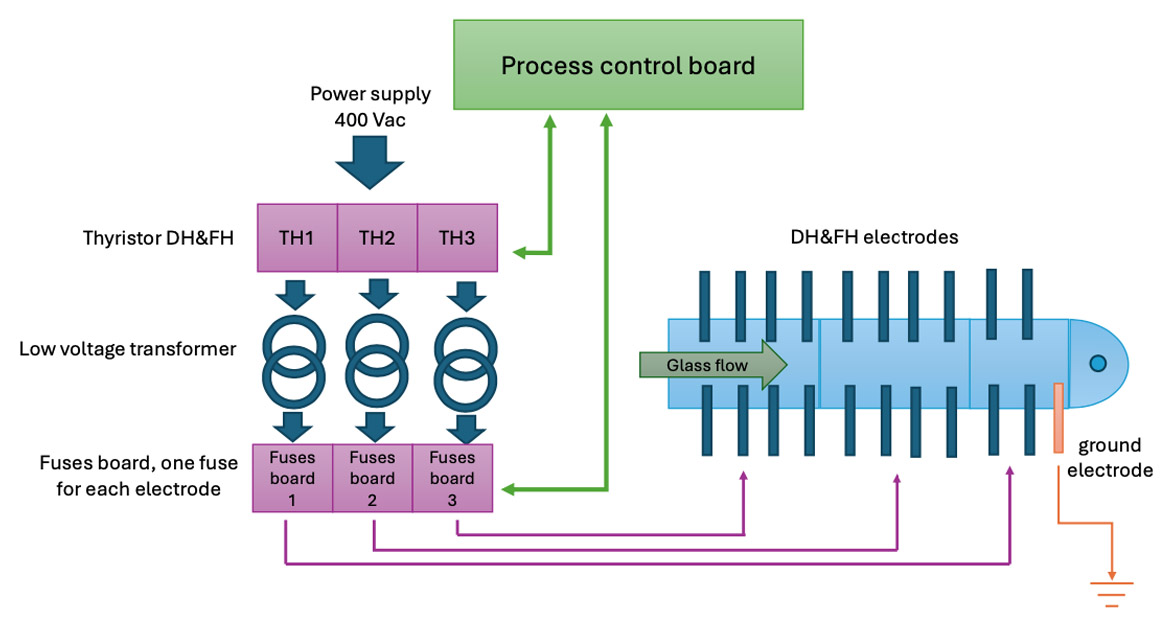
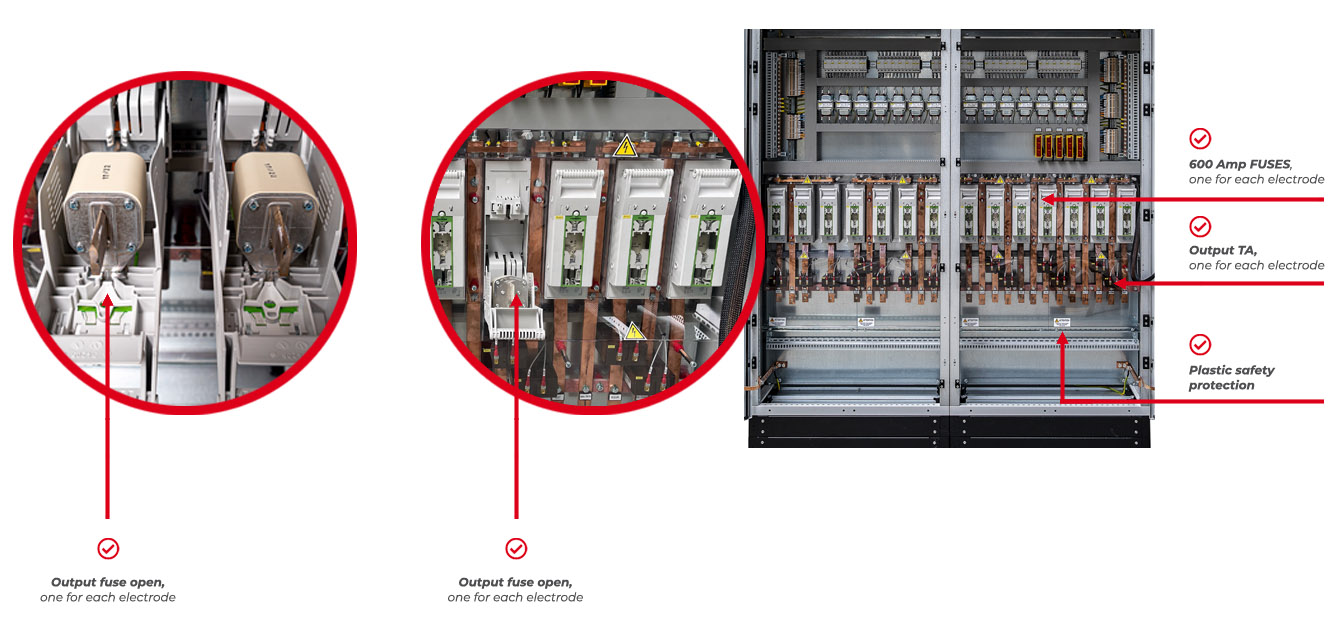
Fuses board section
distributor and forehearth
The Glass service technology includes in the electrical power circuit a fuse panel with a dedicated fuse for each installed electrode.
With this solution, short circuit protection is ensured, and perfect electrical isolation is achieved in case of maintenance in a single channel zone.
Distributor and forehearths
Air-cooled electrodes
